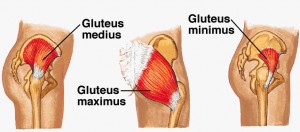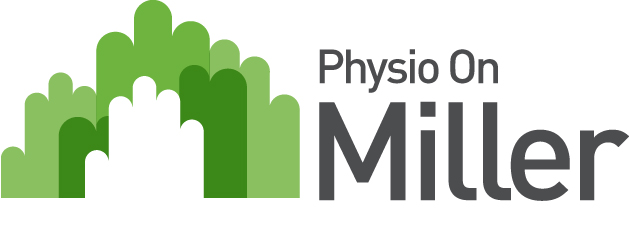Are your glutes weak?
One of the largest and most powerful groups of muscles in the human body is located in the buttocks. Consisting of the gluteus maximus, gluteus medius and gluteus minimus — collectively known as “the glutes”. These muscles are important to most of the body’s active movements. If they are weak or underdeveloped, bad posture and numerous health problems can result.

How do “glutes” become weak?
- Inactivity as we spend most of our day sitting on them
- Following an injury (low back, hip, knee or ankle) the glutes can ‘turn off’ to prevent further compression or pain
- After an episode of pain we will avoid movement because we are scared they will cause pain. This leads to decreased use of muscle.
Some very common conditions that we see in the clinic that can be directly related to glut weakness include:
- Trendelenburg sign which can lead to injuries to the lumbar spine, sacroiliac joint (SIJ), greater trochanter bursa, overactivity of piriformis and tensor fascia lata (TFL)
- “Knocked knees” can lead to injuries to the patellofemoral joint, patella tendon and fat pad.
- Same-sided shift of trunk (lateral flexion of trunk) can lead to injuries to the lumbar spine due to increased disc and facet joint compression or SIJ due to increased shear forces.
Physiotherapy can improve glut strength
Our physios can conduct a thorough assessment to establish which glut muscles are weak and prescribe an exercise program to improve recruitment, strength and endurance. This includes specific muscle training to help recruit muscles and improve control and strengthening exercises to assist in strengthening and improve efficiency of the muscle.
Strengthening exercises of the “glutes” can help to reduce any secondary problems associated with the weakness by helping with stability and function of the joints. The gluteus medius and minimus are important lateral stabilizers of our pelvis. The major purpose of this is to prevent tilting of the pelvis. This is important as it allows our swing foot to clear the ground when walking and provide a stable base for our lower back. The glut max is our power muscle giving us strength to get out of a chair, climb up stairs and sprint up hills.
So get your butt into gear this summer (your body will thank you)!
